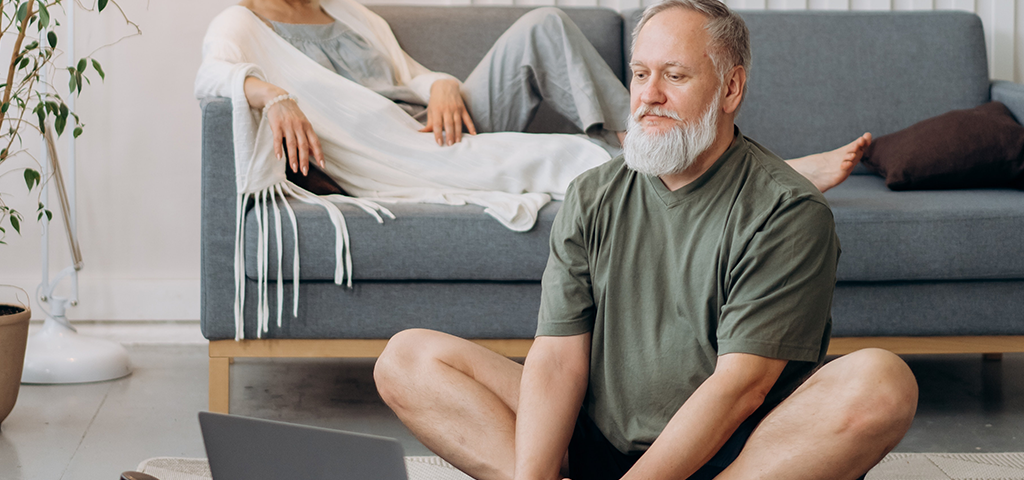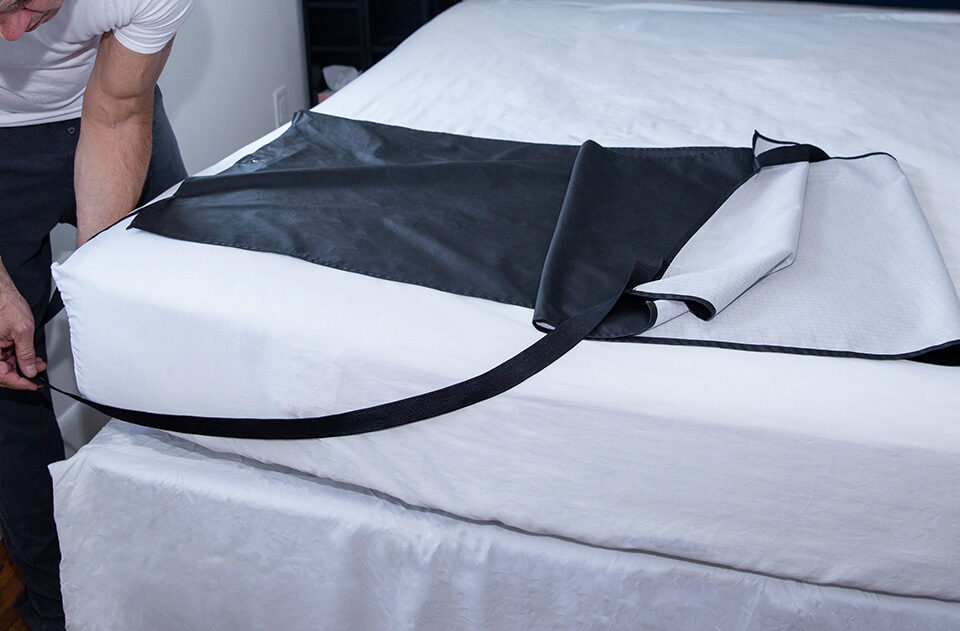Maintaining Muscle Mass in Old Age: Strategies for Health and Mobility

The biggest asset you have going into old age is muscle. As we age, our bodies naturally undergo several changes that can lead to a decline in muscle mass and density. This can result in a wide range of health problems, such as reduced mobility, increased risk of falls, and lower overall quality of life. However, the good news is that it is possible to maintain and even improve your muscle mass and density as you get older with the right strategies.
Importance of Muscle Density
Muscle density refers to the amount of muscle tissue in a given area of your body. Maintaining good muscle density is crucial for overall health, particularly as we age.
Research has shown that sufficient muscle density is associated with several health outcomes, including:
- Increased bone density: As muscle contracts during exercise, it creates a pulling force on the bones to which it is attached. This force stimulates bone tissue to grow and become denser, which can increase bone strength and reduce the risk of fractures. One study found that resistance training increased bone mineral density in postmenopausal women with osteoporosis, leading to a 2.7% increase in hip bone density after 12 months of training (1).
- Improved metabolic function: Muscle is a metabolically active tissue that requires energy to function. As a result, having more muscle mass can increase your body’s resting metabolic rate, which is the amount of energy the body burns at rest. This can help with weight management and reduce the risk of metabolic diseases such as type 2 diabetes. A study published in the Journal of Clinical Endocrinology and Metabolism found that increasing muscle mass through resistance training improved insulin sensitivity in overweight and obese adults, reducing their risk of developing type 2 diabetes (2).
- Reduced risk of chronic diseases: Muscle density can also reduce the risk of chronic diseases such as cardiovascular disease and diabetes by improving blood glucose control, lipid profiles, and blood pressure. Scientists found that greater muscle mass is associated with a lower risk of cardiovascular disease in older adults, even after adjusting for other risk factors such as smoking, diabetes, and high blood pressure (3). Increasing muscle mass through resistance training improves glucose levels and insulin sensitivity in obese adults, reducing their risk of developing type 2 diabetes.
Muscle Power and Old Age
Our bodies experience many changes as we become older, which can lead to a decline in muscle mass, also known as sarcopenia. Research suggests that muscle mass can decline by up to 8% every decade after the age of 40 (4). This can lead to a range of health problems. For instance, sarcopenia can lead to a decrease in muscle power, which is an important predictor of falls in older adults. One study found that low muscle mass and strength were independently associated with an increased risk of falls in older adults (5). Reduced muscle mass has been linked to a decline in functional mobility, which can limit an individual’s ability to perform activities of daily living.
Here are some examples of loss of muscle mass and power::
- Walking: Reduced muscle mass and strength can make it more difficult to walk long distances, climb stairs, or navigate uneven terrain.
- Standing up and sitting down: Weak leg muscles can make it difficult to stand up from a seated position or lower oneself onto a chair or bed.
- Lifting and carrying objects: Weakness in the arms and shoulders can make it difficult to lift and carry objects such as groceries, laundry baskets, or bags.
- Personal hygiene: Reduced mobility can make it difficult to perform personal hygiene tasks such as showering, getting dressed, and grooming.
- Household chores: Reduced muscle strength and mobility can make it challenging to perform household tasks such as cleaning, cooking, and yard work.
- Social activities: Declines in mobility can impact an individual’s ability to engage in social activities such as walking with friends, attending events, or traveling.
Although the impact of reduced muscle mass and mobility can vary depending on the person and the severity of their condition, in general, maintaining muscle mass and strength through regular physical activity can help to preserve functional mobility.
Building Muscle into Old Age
Building muscle into old age requires a combination of regular physical activity, a healthy diet, and lifestyle factors such as getting enough sleep and reducing stress. One of the most effective ways to build muscle is through weight training or resistance exercises. These types of exercises involve using external weights or your own body weight to challenge your muscles and stimulate growth.
It’s important to start slowly and gradually increase the intensity and frequency of your workouts as your body adapts. Aim to do resistance exercises at least two to three times per week, with a focus on targeting all major muscle groups. This can include exercises such as squats, lunges, push-ups, and bicep curls.Research has shown that weight training can improve balance, gait, and overall mobility in older adults (6).
Other exercises that can be beneficial for improving mobility and overall physical function include yoga, tai chi, and pilates. These types of exercises focus on building strength, balance, and flexibility, and can be particularly useful for those with joint pain or other mobility issues.
Diet and Supplements to Keep Muscle Mass
In addition to regular exercise, maintaining a healthy diet is crucial for maintaining and building muscle mass. This means consuming adequate amounts of protein, which is essential for muscle growth and repair. Aim to consume about 0.7-1.0 grams of protein per pound of body weight per day. For example, if you weigh 150 pounds, you may want to aim for a protein intake of 105-150 grams per day. It’s important to note that protein intake should be spread throughout the day and combined with a balanced diet that includes a variety of nutrient-dense foods. Good sources of protein include organic lean meats, fish, eggs, beans, and tofu.
Supplements can also be useful for maintaining and building muscle mass. One of the most popular supplements for muscle growth is creatine, which has been shown to be effective for improving muscle strength and size in older adults (7). Other supplements that may be beneficial for muscle growth include beta-alanine, branched-chain amino acids (BCAAs), and whey protein.
The sitting-rising test
One way to determine your level of fitness is by doing the sitting-rising Test. This is a functional fitness test that assesses your ability to perform a fundamental movement pattern: sitting down and standing up from the floor without using any support. The test evaluates multiple physical attributes, including balance, flexibility, and muscle strength, particularly in the lower body.
Here are the steps to perform the sitting-rising test:
- Find a clear, open space on the floor, and remove any objects or obstacles that could be hazardous.
- Stand in an upright position with your feet shoulder-width apart and your arms crossed over your chest.
- Slowly lower yourself down to the floor into a cross-legged sitting position, without using your hands, arms, or knees for support. Your back should remain straight throughout the movement.
- Once you have fully lowered yourself to the floor, pause for a moment before rising back up to the standing position.
- Rise back up to a standing position without using your hands, arms, or knees for support. Your back should remain straight throughout the movement.
The primary goal of the sitting-rising test is to determine a person’s degree of functional fitness and their ability to perform daily activities, such as sitting on the floor, bending over to pick up objects, or getting up from a chair. The test can be particularly useful for older adults or individuals with mobility issues to identify any functional limitations.
Additionally, the sitting-rising test has been shown to be a predictor of mortality risk. One study found that individuals who scored poorly on the sitting-rising test were more likely to have a higher risk of death compared to those who scored well on the test. Therefore, the test can also serve as a general indicator of overall health and fitness levels (8).
Here is a video of the test and ways to improve it.
Conclusion
Maintaining and improving muscle mass and density is crucial for overall health and well-being, especially as we get older. By incorporating regular exercise, a healthy diet, prioritizing getting enough sleep and reducing stress, it is possible to maintain and even improve your muscle mass and density as you age. So, start incorporating these strategies into your daily routine and keep your muscles strong and healthy for years to come!





